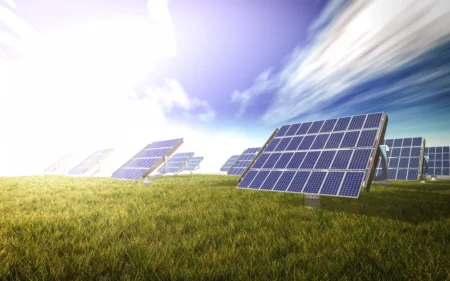 Harnessing renewable energy sources in your home is not only eco-friendly but also a smart way to reduce your energy bills.
Harnessing renewable energy sources in your home is not only eco-friendly but also a smart way to reduce your energy bills.
From solar power to wind energy, there are various renewable options to explore.
Today, we’ll guide you through the process of incorporating renewable energy sources into your home.
1. Solar Power Installation
Pros:
- Sustainable. Solar panels harness energy from the sun, which is a virtually limitless and renewable resource.
- Lower Energy Bills. Once installed, solar panels can significantly reduce your monthly electricity costs.
- Eco-Friendly. Solar power is clean and reduces your carbon footprint.
Cons:
- Initial Cost. Solar panel installation can be expensive, though there are often government incentives and rebates available.
- Dependent on Sunlight. Solar panels require sunlight, so energy production may decrease on cloudy days.
2. Wind Turbines
Pros:
- Versatile. Wind turbines can be installed on rooftops or in your yard, making them suitable for various locations.
- Energy Independence. Wind energy can provide a degree of energy independence, reducing reliance on the grid.
Cons:
- Location-Specific. Effective use of wind turbines depends on the wind speed and local regulations.
- Initial Investment. Wind turbine systems can be costly, and maintenance may be required.
3. Geothermal Heating and Cooling
Pros:
- Energy Efficiency. Geothermal systems use the stable temperature of the earth to heat and cool your home efficiently.
- Longevity. These systems can last for decades with minimal maintenance.
Cons:
- Installation Complexity. Geothermal systems require professional installation and may involve drilling into the ground.
- Upfront Cost. Initial setup costs can be higher than traditional heating and cooling systems.
4. Hydroelectric Systems
Pros:
- Consistent Power. If you have access to a water source with sufficient flow, hydroelectric systems can provide consistent power.
- Sustainability. Running water is a reliable and continuous source of energy.
Cons:
- Environmental Impact. Hydroelectric systems can have ecological implications and may require regulatory approvals.
- Installation Challenges. Installing a hydroelectric system can be complex and costly.
5. Biomass Energy
Pros:
- Renewable Fuel. Biomass energy relies on organic materials like wood or crop waste, which can be renewable and sustainable.
- Waste Reduction. Using biomass can help reduce waste and lower disposal costs.
Cons:
- Emissions. Some biomass systems can emit pollutants, so it’s crucial to select clean-burning options.
- Storage Space. Storing biomass materials can require space and regular maintenance.
Incorporating renewable energy sources into your home not only benefits the environment but can also lead to long-term savings on your energy bills.
Carefully consider the pros and cons of each option and choose the renewable energy source that best aligns with your location, budget, and sustainability goals. With the right choice, you can enjoy clean, renewable energy while reducing your environmental footprint.
Picture Credit: Freepik



